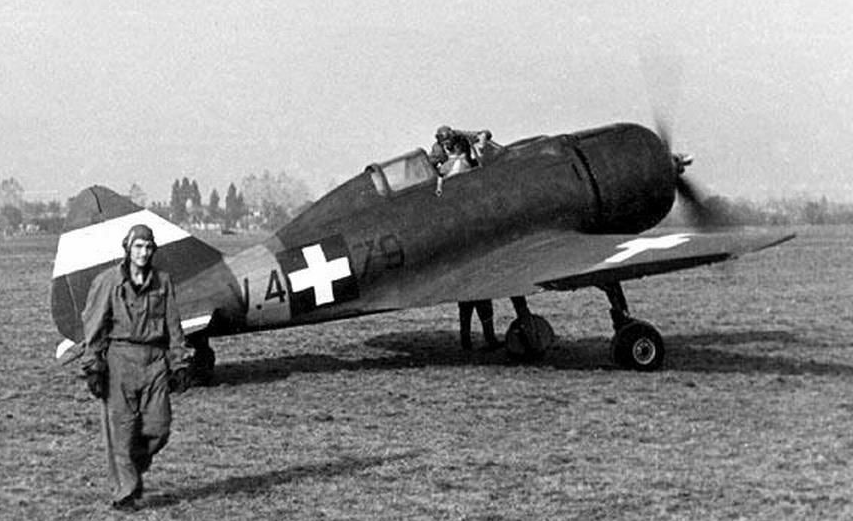The MÁVAG Héja 2 was a Hungarian developed plane that used an existing Italian designed aircraft and improved it that shows the ingenuity and resourcefulness during World War II. Representing a significant development from its predecessor, the Héja 1 this plane gave a fighting chance for the Hungarian Royal Airforce against the allied bombing raids. Born out of the Italian Reggiane Re.2000, the Héja 1 was transformed into a truly Hungarian aircraft, with locally produced components such as the Weiss Manfréd WM K-14 engines and additional armor for the pilot.
The Héja 2, a further evolution of the design, showcased even more substantial modifications. These included the replacement of Italian machine guns with superior Hungarian models and the installation of a more powerful Hungarian engine. The armament was upgraded to twin 12.7mm engine-driven guns, offering enhanced firepower. Notably, the Héja 2 was entirely constructed within Hungary, with locally manufactured airframes, engines, and armament.
A total of 204 Héja 2 fighters were built for the Royal Hungarian Air Force (RHAF). The maiden flight of the first production Héja 2 took place on October 30, 1942. MÁVAG continued production for the RHAF, completing the last aircraft on August 1, 1944. Unlike its predecessor, the Héja 2 did not see action on the Eastern Front. Instead, it operated within Hungary, fulfilling an air defense role and intercepting bombers and as an advanced trainer.
One notable engagement occurred on April 2, 1944, when 180 bombers from the USAAF 15th Air Force, escorted by 170 fighters, bombed Budapest. Hungarian Fighter Control Center ordered to scramble a wing of Héjas together with 12 Messerschmitt Bf-109Gs and a couple of Messerschmitt Me 210 CA-1, resulting in conflicting claims of downed aircraft. The Hungarian pilots asserted 11 American planes were shot down, while the Americans claimed 27 Hungarian aircraft. Later records revealed only two Hungarian pilots were killed.
As the war progressed, Hungary faced challenges such as allied bombing raids on factories and infrastructure also material shortages. Many unfinished Héja 2 planes were destroyed in factories. In the meantime the lack of spare parts grounded many operational aircraft. The last official report mentioning Héja 2s dates back to February 22, 1945, documenting a crash during a training flight.
In conclusion, the MÁVAG Héja 2 stands as a symbol of Hungary's attempt to create a capable indigenous fighter aircraft during a tumultuous period of World War II. Despite the challenges and limited combat actions, it reflects the nation's determination to contribute to the war effort with its own technological innovations.




